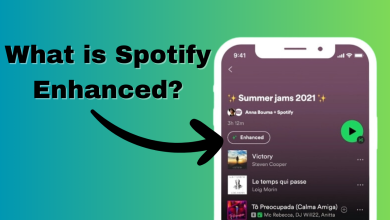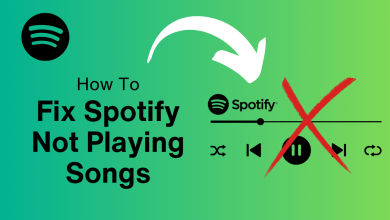Fix: Spotify Web Player won’t Play
Spotify is a Swedish based audio streaming platform which provides users with more than 50 million songs and podcasts. Spotify also provides users with a web-player for browsers so that you don’t have to download the application. However, quite recently a lot of reports have been coming in of users who are unable to stream audio on the web service of Spotify. The users cannot play any tracks and refreshing the page does not fix the issue.
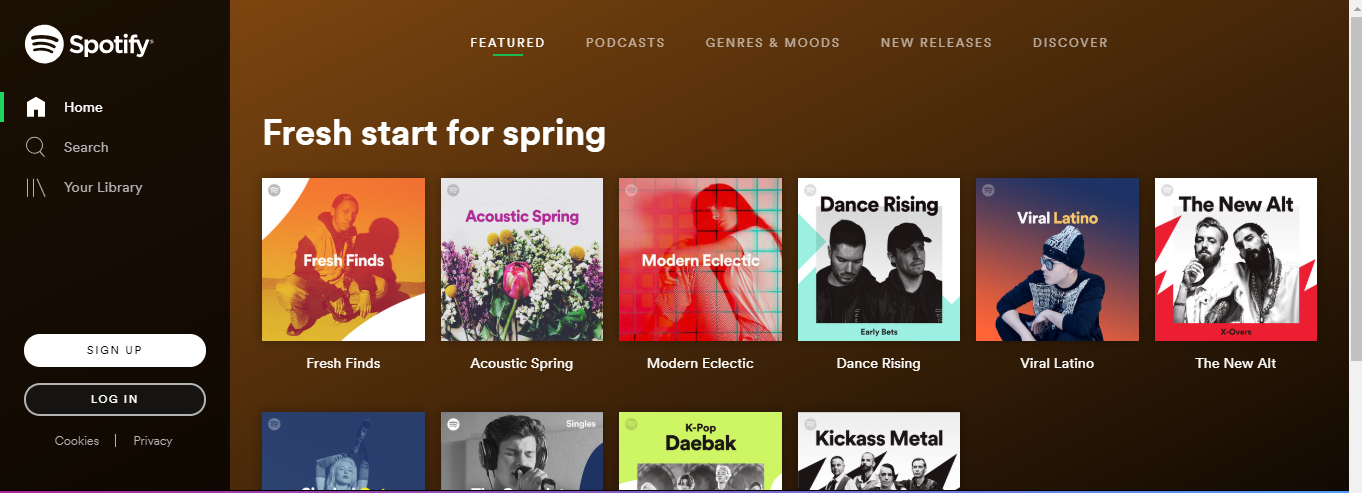
What Prevents the Spotify Web Player from Working?
Upon receiving numerous reports from users we investigated the issue and scribbled up a guide that solved the issue for most of our users. Also, we have put together a list of reasons due to which the error is triggered and they are listed as follows:
- Multiple Logins: Sometimes, if the Spotify account is logged in across a lot of devices it prevents you from streaming the music. This seems to be a constant issue with many users who have their account logged into multiple devices even though the other devices are not using the application while trying to stream audio on the web player.
- Cookies and Cache: All applications store cache to decrease the application loading times and provide a smoother experience. Similarly, websites store cookies for the same purposes. However, the cache and cookies can become corrupted over time and cause problems with the loading process of the site.
- Safari Browser: If you are trying to use the Spotify web player on the Safari browser it will not work. Because Spotify was rendered unusable on the browser after many updates that no longer support the browser’s architecture.
Now that you have a basic understanding of the nature of the issue we will move on towards the solutions. It is recommended that you try these solutions in the specific order in which they were presented.
Solution 1: Loading Track Directly
Sometimes, the web player can glitch during the loading process of the website. A simple fix for this is to try to load the song that you are trying to play by pasting the link inside the browser directly. Therefore, in this step, we will be copying the song’s link and pasting it to open it directly.
- Open the browser and launch the web player service.
- Navigate to the track that you want to play and click on the three dots in front of the song and select “Copy song link“.

Copying song link - Paste this link the address bar of your browser and press “Enter“.
- Once the page loads try to play the song and check to see if the issue persists.
Solution 2: Refreshing Selected Device
If the account is logged into multiple devices and is also being used on your mobile phone or tablet it can sometimes face issues while making the switch from the selected streaming device. Therefore, in this step, we are going to be reinitializing the selecting process. For that:
- Open the web player on your computer.
- Grab the phone or tablet on which the account is logged into and open the Spotify application.
- Tap the “Settings cog” and select the “Devices” option.
- Tap on the “This Phone” option on your mobile, wait for 2 minutes and then tap on the “Listening on: Web Player (your browser’s name)” option.

First, select the “This phone” option and then the “Web Player” option. - Navigate back to the web player on the browser and click on the “Connect” button at the bottom right.
- Make sure that the “This web player” is selected from the list.

Making sure that the “This Web Player” option is selected in the Web player - Try to play the audio and check to see if the issue persists.
Solution 3: Deleting Cache and Cookies
The cache and cookies can become corrupted over time and cause problems with the loading process of the site. Therefore, in this step, we will be deleting the cache and cookie from the browser. The process varies slightly depending on the browser that you are using.
For Chrome:
- Close all tabs and open a new one.
- Click on the menu button on the top right of the browser and select “Settings” from the list of options.
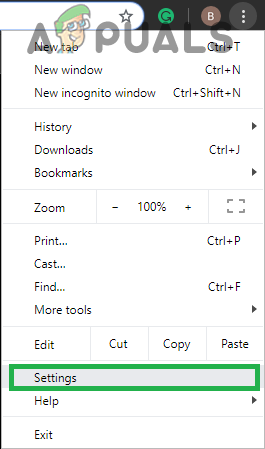
Clicking on the menu button and selecting Settings - Scroll down to the bottom and click on “Advanced“.
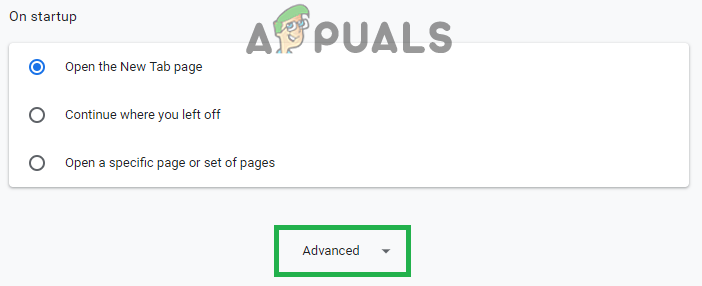
Scrolling down and selecting “Advanced” - Scroll down further and click on “Clear Browsing Data” under the “Privacy and Security” heading.
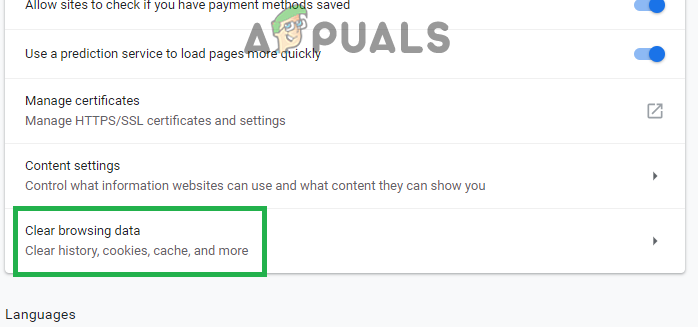
Clicking on the “Clear Browsing Data” option - Click on “Advanced” select “All time” from the time range and check the first four options.
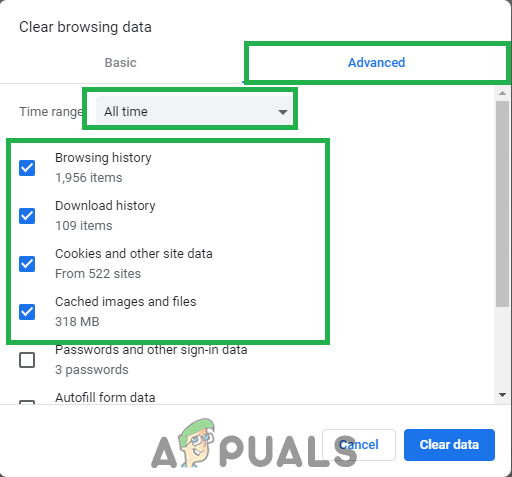
Clicking on Advanced, selecting “All time” as range and checking the first four options - Click on “Clear Data” and restart your browser.
- Open the Spotify website and check to see if the issue persists.
For Firefox:
- Open the Firefox browser and launch a new tab.
- Click on the menu button on the top right corner and select “Options” from the list.
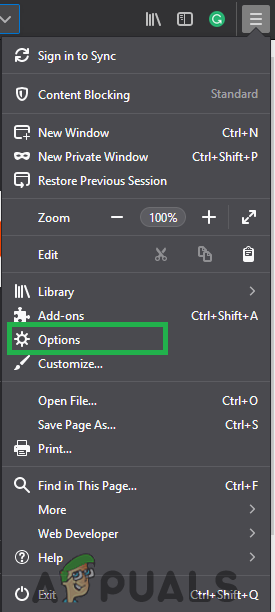
Clicking on the menu button and selecting “Options” from the list - Click on the “Privacy & Security” button on the left pane and scroll down to the “Cookies & Site data” heading.

Selecting “Privacy & Security” from the left pane - Click on the “Clear Data” button and select the “Clear” option when the message displaying the space that is occupied by the cache and cookies is shown.

Clicking on “Clear Data” option and selecting “Clear” - Open the Spotify website, try to play audio and check to see if the issue persists.
For Microsoft Edge:
- Open the browser and click on the menu button on the top right corner.
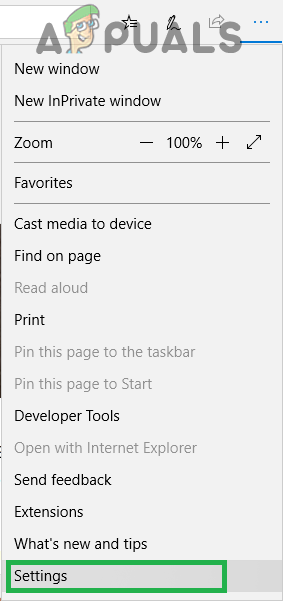
Clicking on the menu button and selecting “Settings” from the list. - Select “Settings” from the list of options and scroll down to the “Clear Browsing Data” tab.
- Select the “Chose what to clear” button and check the first four options.
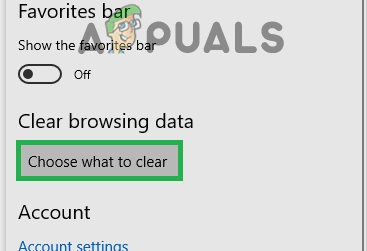
Scrolling down and clicking on “chose what to clear” - Click on “Clear” and restart the browser.
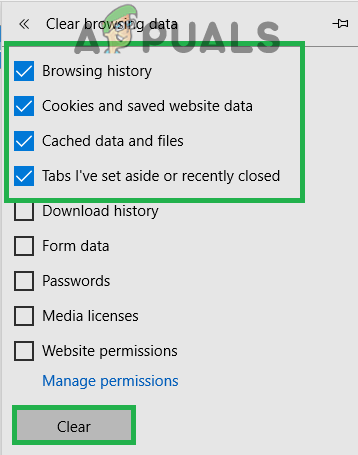
Make sure these options are checked and select “Clear” - Open the Spotify website, play the audio and check to see if the issue persists.




